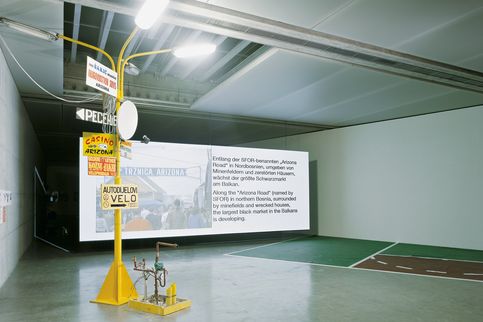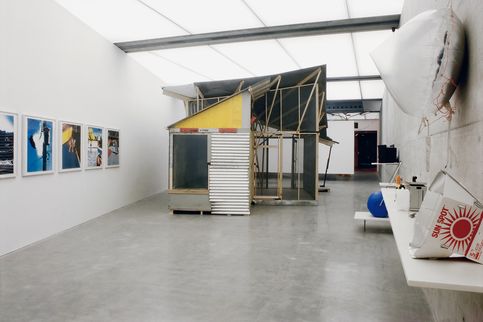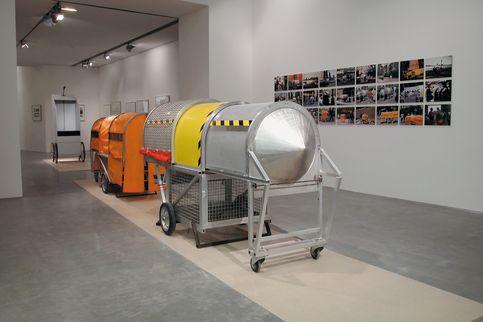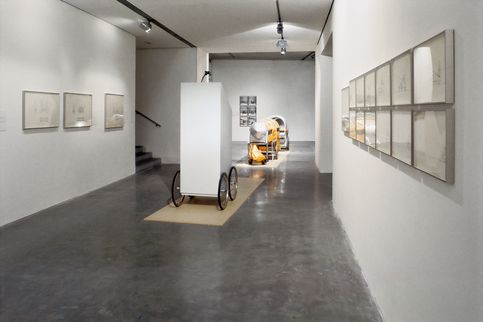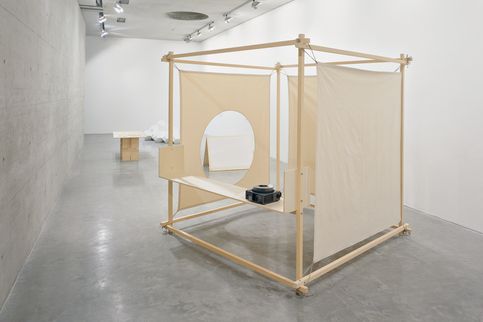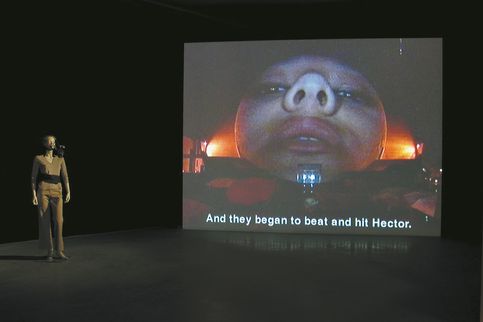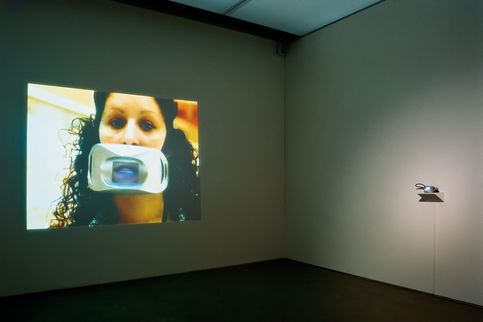Designs
for the Real World
Concept, Curator: Sabine Breitwieser
Co-Curator, Exhibition production: Hemma Schmutz
Works by Azra Aksamija, Marjetica Potrc, Florian Pumhösl und Krzysztof Wodiczko
This exhibition presented selected projects by four artists who had explored the design of our living environment and are particularly known for their interdisciplinary approach. The various projects, each in their own way, addressed utopian and ecological design, design for the Third World, "social engineering," urban development, urban areas of conflict, and the question of the responsibility of art in "new genre public art."
Azra Aksamija (*1976 in Bosnia and Herzegowina) had developed a project focusing on the creation and analysis of a new urban structure. With its ethnically mixed population, the "Arizona Market," the largest black market in Bosnia - established in 1997 by American SFOR troops-provided an ideal object for examination. Aksamija considered as a positive phenomenon the self-regulation carried out by the residents of this center which had offered all kinds of merchandise. Prototypes of the interventions proposed by the artist - a "provocateur pole" with all necessary connections for electricity, water, and sewerage, and a place holder in the form of a sports field - have been constructed for the exhibition. A double video projection featuring visual and acoustic impressions of the market, a timetable of the historical, political, and social situation served to round off the picture that Aksamija presented of the Arizona Market.
Marjetica Potrc (*1953 in Slovenia) followed a similar approach with her reconstruction of urban structures in suburbs or slums, mainly in the Third World. The artist explored the buildings arising around "core units" - simple docking places for basic supplies - and reconstructed them in the exhibition area. For the exhibition at the Generali Foundation, she reproduced a building by the American architect Samuel Mockbee (1944-2001) and his "Rural Studio." Mockbee's aim was to design innovative housing for impoverished populations in America's south. The special feature of the Butterfly-House is its striking wing-shaped roof, used to harvest rainwater. Shanty towns, gated communities, and mobile architecture are the focus of Potrc's photographic series. The third part of her presentation in Vienna was the exhibition of innovative designs, including, among others, a ready-made for the Third World.
Florian Pumhösl (*1971 Vienna) offer´s projects that allow viewers to experience fascination with the aesthetics and rhetoric of modernism and its renewal movements that followed it, combined with critical analysis and objective examination. The work shown at the exhibition, "on or off earth," 1996, made visible the basic structures of the artist's aesthetic approach. The model-like reconstruction of designs by Victor Papanek, including some from his book "Designs for the Real World"; the use of publications and texts to contextualize them within historical discourses; and the critical commentaries by the artist himself, all combined to form a comprehensive picture for the examination of the utopian content of the alternative movements of the 1960s.
The "politics of the absurd" of Poland of the 1970s were probably the force behind the development of the first vehicles by Krzysztof Wodiczko (* 1943 in Poland). "First Vehicle" (1972), for example, was pushed forward by the artist's own back-and-forth walking motion. In the late 1980s, Wodiczko developed these vehicles further, taking into account a different reality of capitalistic society to create the series, "Homeless Vehicles." They provided this social group with a "street tool" that responded to the basic necessities of survival economy such as living, sleeping and washing, as well as collecting and reselling cans and bottles. The artist's intention to give marginalized groups the power of public presence and speech is manifested in design projects such as "Alien Staff" - a communication aid for immigrants - as well as in his at then times latest public projects. In "The Tijuana Projection" (2001), the harsh personal experiences of the woman population of the Mexican border city of Tijuana were projected live in audio-visual form onto the monumental dome of the building El Centro Cultural. Krzysztof Wodiczko is Professor (2003: emeritus) of the Interrogative Design Group at the Center of Advanced Visual Studies and the director of Visual Arts Program at Massachusetts Institute of Technology (M.I.T.) in Cambridge.
In the 1960s Victor Papanek set new design standards with the development of his Tin-Can Radio, which can be used anywhere, independent of electrical supply. Moving beyond aesthetic issues, he placed ecology, economy, and sustainability at the forefront of the design process.
The artists' projects for this exhibition explored the social, political, and economic living conditions within their specific frame of reference, and develop approaches to a new design for the real world.

